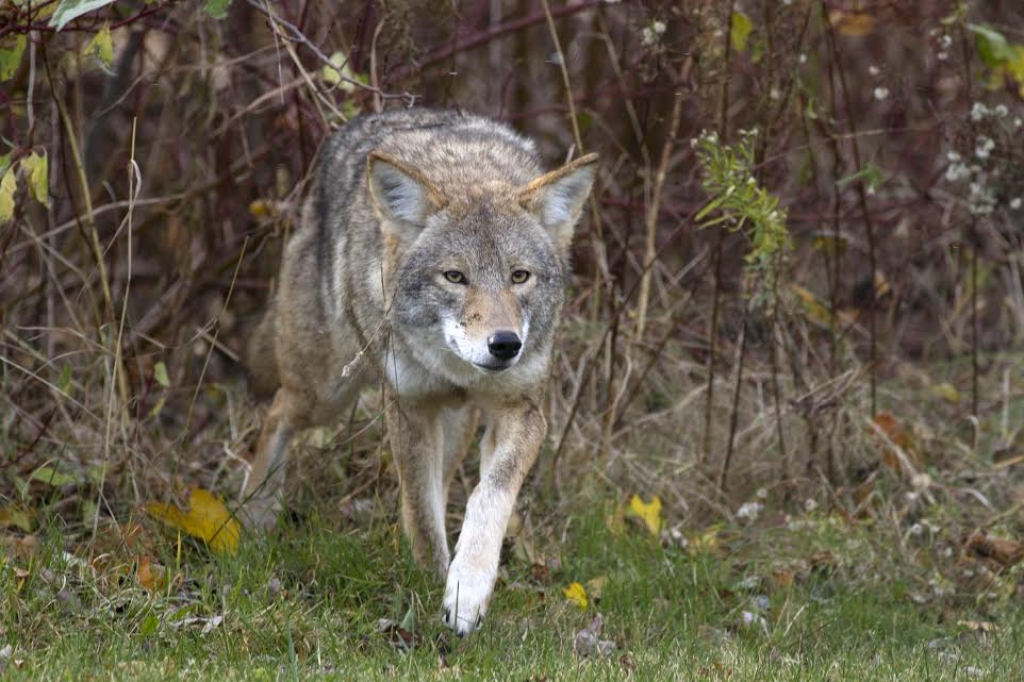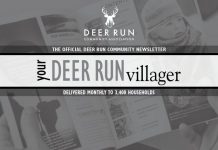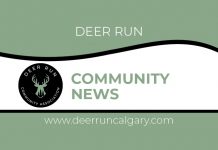As Told to Todd Andre
Lesley Sampson is the Founding Executive Director of Coyote Watch, an all-volunteer, not-for-profit wildlife organization that advocates for and helps foster safe and healthy human-wildlife relationships. She is passionate about teaching the public how to live in harmony with the much-maligned wild dogs we call coyotes.
She’s proud to share her home with a member of their rival species, dogs, but recoils from any claims to ownership of her cuddly canine Sydona. “I’m a dog guardian,” chuckles Sampson, “because I think he probably owns me!” With coyotes being around since the last ice age, it is hard for Sampson to understand how our relationship with these creatures diverged so far from how we treat dogs, “You’d think after all these years, I mean, how do we love one and hate the other?”
With pupping season for coyotes now unfolding, we will see coyote families bustling around Fish Creek Park hunting and foraging for their little ones. Sampson shared insights about sharing our park with these intelligent canids.
• Once people realize and understand what coyotes are trying to tell them through their behaviour, their postering, and their vocalizing – people really become empowered. It feels good and people really begin to want to protect these American Wild Dogs.
• We don’t [want to use language like]: aggressive, bold, habituated. Language is easy to dismiss, but when you look at how we describe dog behaviour, we say, “They were being protective,” or, “They were resource guarding.”
• There’s this real abyss of understanding that we live and share our spaces with an amazing creature. Give these animals their due respect and reverence.
• Understand the seasonal milestones. Pup rearing time is in April. The pups are born, then they are outside exploring the den. Mom and Dad might have to move them to an alternate denning site. They might shadow or escort humans away from a vulnerable area where there are pups.
• If you see feeding, report it. Feeding creates unnecessary conflict and drama.
• If you tell the public, ‘This particular coyote has been food and/or human conditioned.’ Well, what does that mean? There’s been an introduction to human food, directly fed or indirectly fed (garbage). Food is usually put in public areas; trails, parks, and parking lots.
• You hear, ‘That coyote is bold. That coyote is not afraid of people.’ In all the years I’ve been working with coyotes, I’ve never met a coyote that was not afraid of me or people. With our team’s first delivery of aversion conditioning – that coyote understands they need to leave. So, is that a coyote that is not afraid?
• This amazing canid cleans up the dead animals and keeps other animals moving along. They are seed dispersers. They add to the biodiversity of fauna, and flora as well.
• If you did a conservative estimate, a coyote eats five small mammals a day – be it rabbits, moles, or voles. That coyote removes 1,825 small mammals in a year. Communities will put out poison to rid themselves of small mammals, impacting all the raptor [Osprey] and owl population negatively.
• It’s a greenspace, so assume there are animals there. We have to do everything we can to keep ourselves, our dogs and the coyotes safe. Don’t recreate with earbuds in and be on your cell phones. Enjoy nature and be aware.
• You’ve got to love the leash, so leash up; Ninety-two percent of negative encounters with coyotes are dogs without a leash. And pick up your poo!




Click here to the Deer Run Community News home page for the latest Deer Run community updates.











